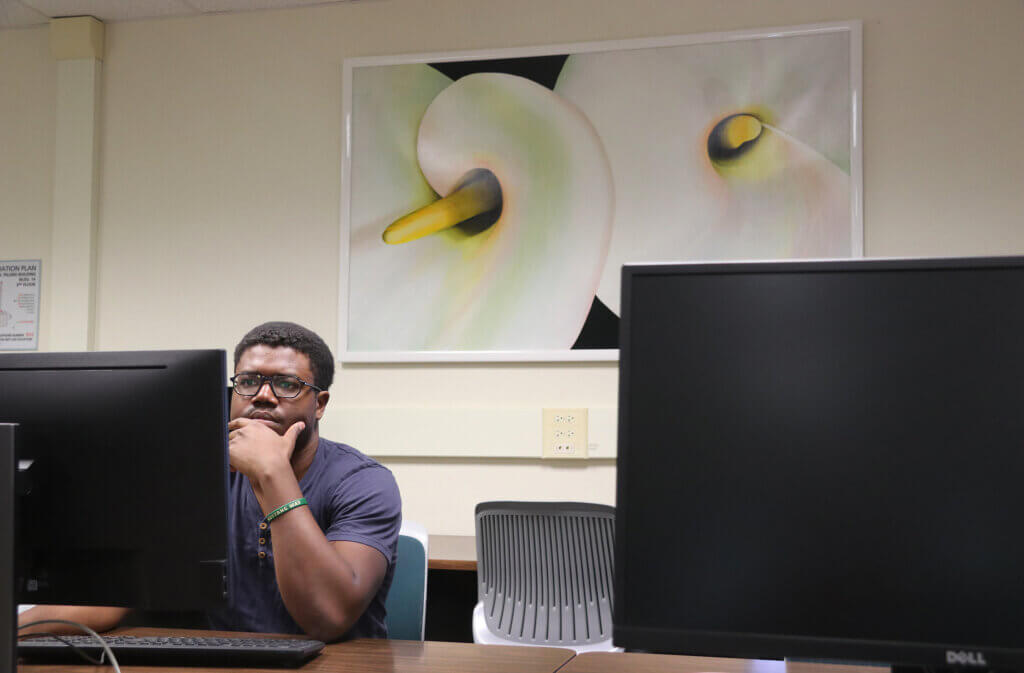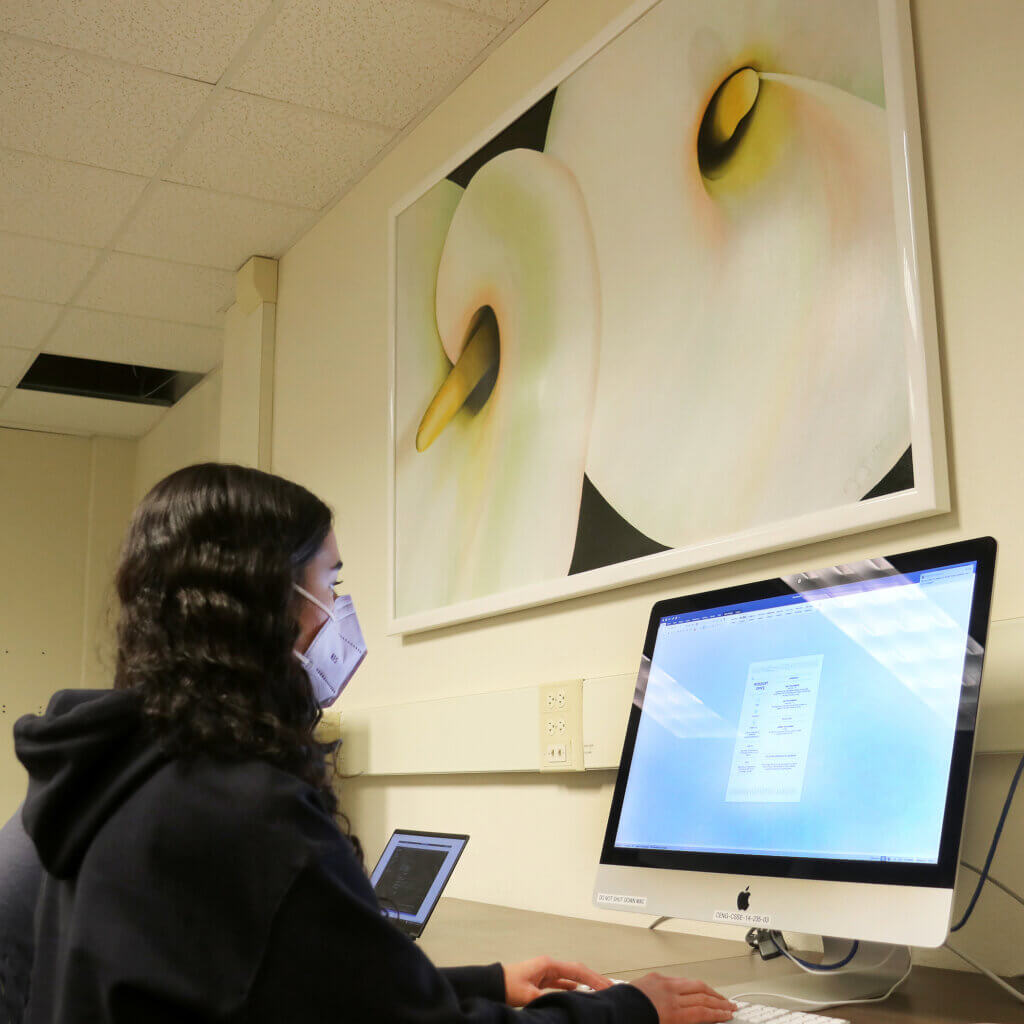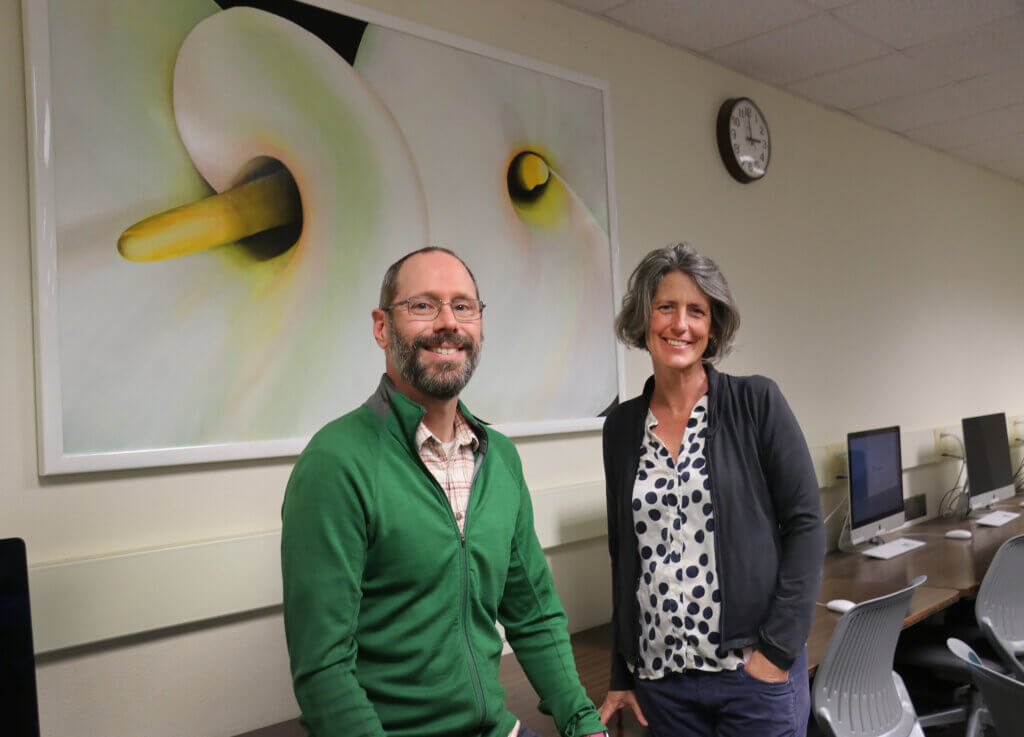
An initiative introducing more artwork to the college will make the walls of multiple engineering buildings more visually appealing — and, according to at least one study, more welcoming to underrepresented students.
Already, paintings donated by a prolific couple have been added to the main computing lab, with more on the way for Building 192 and the Advanced Technologies Lab (ATL). And more art will be added with the 2022 Art of Engineering Challenge, which invites submissions from engineering students, faculty, staff and alumni.
In the main computer science lab (Building 14, room 235), two paintings by Annie Armstrong, depicting calla lilies and a butterfly cone, now break up the empty space.
“The walls were just big blank white spots before,” said computer science professor Zoë Wood, who is leading the art initiatives. “The paintings definitely improve the space with color and a reminder there is more to life than blank walls.”
Armstrong and her husband, Duane, have produced more than 7,000 works of art, including many that are on display worldwide. In 2012, they donated 59 paintings to Cal Poly to sell, display or exhibit, according to the San Luis Obispo Tribune. The paintings were originally donated to the Graphic Communication Department, which has many hanging in its spaces and has been loaning them to several other units across campus.
Duane Armstrong’s paintings often include landscapes and modern expressionism, while Annie’s feature seashells and flowers inspired by Georgia O’Keeffe paintings.
Duane Armstrong spent his childhood in San Luis Obispo, according to the Tribune.

While oil paintings by both Armstrongs will add art to the college, more is coming by way of the Art of Engineering Challenge, which invites artists to submit visual artifacts that celebrate the aesthetic beauty of engineering to help decorate commons spaces and labs.
Selected works will be on display in Buildings 14 and 192, plus the ATL and Bonderson Projects Center. Read more about the challenge here.
Wood, who is an advisor for the computing for interactive arts minor, has advocated for incorporating art and engineering.
“Computing, like all of engineering disciplines, relies on creativity to tackle difficult problems,” she said. “Creativity can arise in all kinds of forms, with visual art being one that can, for the most part, be readily shared.”
Art can also be welcoming for would-be engineering students, which can be especially important in a field like computer science, which has traditionally underrepresented women.
According to one study Wood shared, published by the American Psychological Association, simply changing the objects in a computer science classroom for those considered stereotypical of computer science – such as Star Trek posters or video games – to objects not considered stereotypical boosted female undergraduates’ interest in computer science to the level of their male peers.
Wood hopes the Armstrong paintings will prove to be welcoming in the computer science lab.
“Reminders about the beauty of the natural world can be a relief when working long hours on a computer,” Wood said. “My hope is that, in general, creating inspiring spaces can help all students feel comfortable in our working space.”


